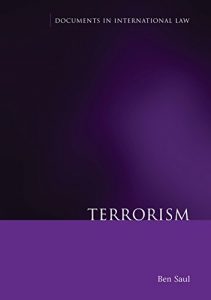International anti-terrorism measures existed long before 11 September 2001 but have increased markedly since. A myriad of norms in different branches of law are now deployed to confront transnational and domestic terrorism. There is also a proliferating body of 'soft law' addressing terrorism, stemming from United Nations organs, specialised international bodies and regional organisations. It is timely to draw together these diverse legal developments over time into a single reference work. Bringing the original documents together provides for ease of reference and enables scholars, practitioners and students to more easily compare and contrast various sources.
The book's coverage is comprehensive (thematically, organisationally, geographically and temporally) and open to a balance of sources (hard and soft), but is judicious in its selection and prioritisation of the most significant and representative documents - in a field where there are many repetitive or insubstantial documents. Importantly, the book looks beyond the traditional trans-Atlantic bias towards European, British and American sources in this area to include materials from Asia, Africa, Latin America and the Middle East. Taken as a whole, the book aids in evidencing the emerging field of international anti-terrorism law.
The book's coverage is comprehensive (thematically, organisationally, geographically and temporally) and open to a balance of sources (hard and soft), but is judicious in its selection and prioritisation of the most significant and representative documents - in a field where there are many repetitive or insubstantial documents. Importantly, the book looks beyond the traditional trans-Atlantic bias towards European, British and American sources in this area to include materials from Asia, Africa, Latin America and the Middle East. Taken as a whole, the book aids in evidencing the emerging field of international anti-terrorism law.



